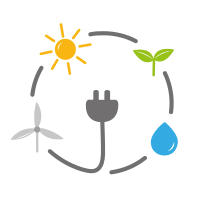
Summary
This mini-unit focuses on the importance of energy in our lives, and the need to consider how and why we consume the energy we do. The associated activities build students’ general understanding of energy system concepts, including the relationship between energy sources (non-renewable and renewable) and consumer energy choices and use.Engineering Connection
Engineers from a range of disciplines assist in designing useful devices that convert energy into forms that help us do everyday activities—from refrigerating and cooking our food, to cleaning and drying our clothes, to powering our vehicles for transportation. Through the application of the engineering design process, engineers develop products and processes that benefit society within the constraints of being energy-efficient, reliable, cost effective, and environmentally-friendly. As non-renewable energy sources decline, engineers are assisting the development of renewable energy sources to meet consumer needs.
Subscribe
Get the inside scoop on all things TeachEngineering such as new site features, curriculum updates, video releases, and more by signing up for our newsletter!Unit Schedule
Suggested activity order:
More Curriculum Like This

This six-day lesson provides students with an introduction to the importance of energy in their lives and the need to consider how and why we consume the energy we do.
Copyright
© 2020 by Regents of the University of ColoradoLast modified: December 2, 2020




User Comments & Tips